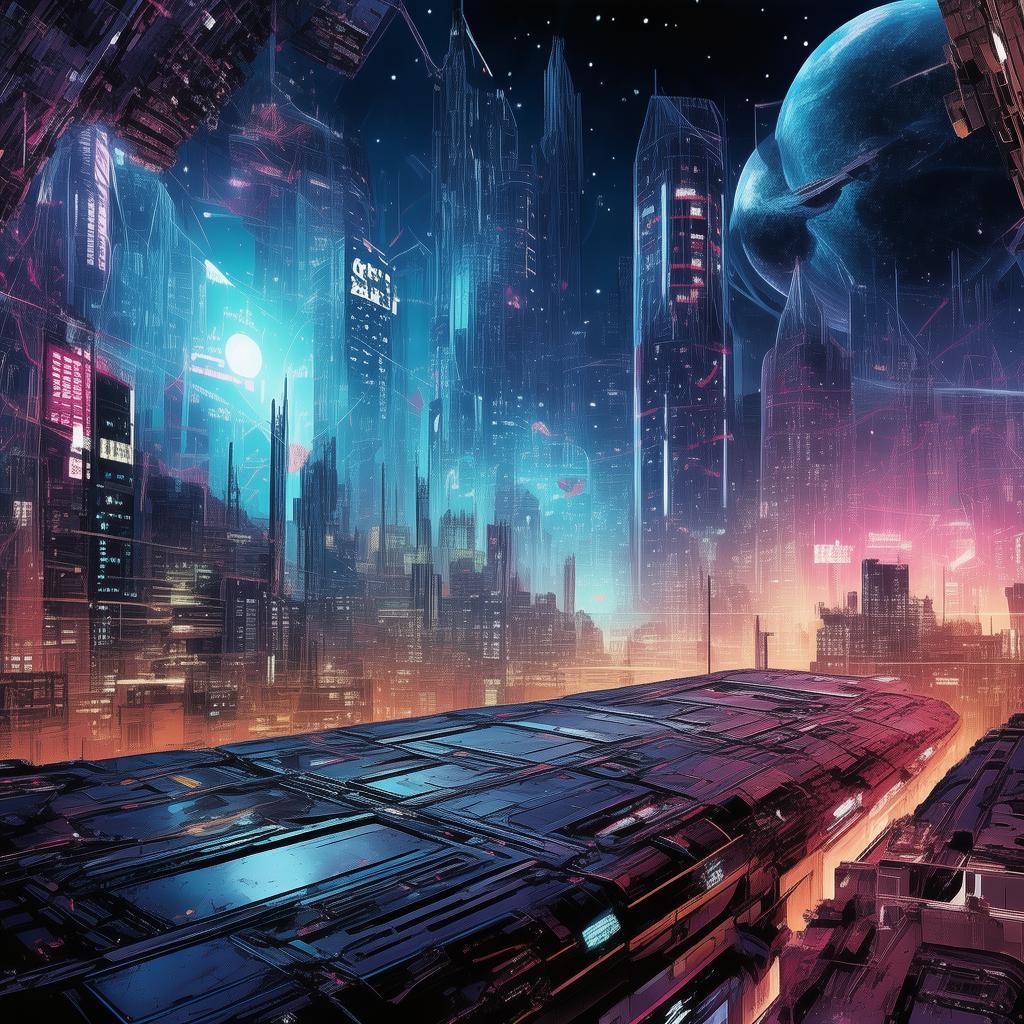The Echoes of Tomorrow
In the year 2147, the world had transformed beyond recognition. Cities were now sprawling metropolises, their skyline punctuated by towering holographic displays that brought art and commerce to life. The Digital Art Contest, The Art of the Holographic Art Contest, was the pinnacle of modern creativity, a virtual reality where artists could craft masterpieces that would be judged by the public and a panel of esteemed experts.
Amidst the chaos of the contest, a young artist named Kaitlyn found herself caught in the whirlwind of digital innovation. Her name was unknown, her portfolio unremarkable, but her vision was extraordinary. Kaitlyn was fascinated by the concept of holographic art, the ability to create images that seemed to float in the air, defying the laws of physics. She had spent countless hours perfecting her craft, her latest project a holographic piece that told a story of a future where humanity had merged with technology, a world where the boundaries between the physical and digital were blurred.
The contest was fierce, with artists from across the globe vying for the title of the greatest holographic artist of the era. Kaitlyn's entry, tentatively titled "Echoes of Tomorrow," was a hauntingly beautiful representation of the consequences of AI's rise. It depicted a society where AI had become so advanced that it could predict human actions with chilling accuracy, leading to a life of surveillance and control.
As the competition progressed, Kaitlyn found herself at the center of a controversy. Her work was not just art; it was a commentary on the moral implications of AI and the potential dangers of allowing machines to govern human lives. The public was divided; some praised her for her boldness and creativity, while others accused her of promoting fear and distrust.
The judges, a panel of experts from various fields, were equally divided. Dr. Elena Vasquez, a renowned AI ethicist, was particularly captivated by Kaitlyn's piece. "The way you've captured the tension between humanity and AI is remarkable," she said. "It's a wake-up call for the world."
But not everyone was so welcoming. Professor Marcus Henley, a former AI developer, saw Kaitlyn's work as an attack on his life's work. "AI is the future," he declared. "Your hologram is a scare tactic that does nothing but harm the field."
The tension between the two camps grew, and Kaitlyn found herself at the mercy of the public's opinion. Her digital gallery was bombarded with messages, both supportive and vitriolic. The digital art contest, which had once been a celebration of creativity, had become a battleground for ideas.
As the final round approached, Kaitlyn's piece was selected for the final showcase. The world would see her vision, and the decision was in their hands. The night before the final presentation, Kaitlyn was alone in her studio, her mind racing with thoughts of the future.
"This is my message," she whispered to herself, "a warning about where we might be heading if we don't act now."
The next day, the world gathered to see "Echoes of Tomorrow" come to life. The holographic display flickered to life, casting a surreal glow on the room. Kaitlyn stood before the crowd, her heart pounding with anticipation.
As the hologram played, the audience was taken on a journey through a society where AI had become omnipresent. The images were stark and powerful, the narrative raw and unapologetic. The crowd was silent, captivated by the story unfolding before them.

Then, in a dramatic twist, the hologram shifted. Instead of ending on a note of despair, it presented a possible solution. Kaitlyn had woven a narrative of hope, a future where humans and AI could coexist, where technology was a tool for progress, not a threat.
The audience erupted into applause, their reactions a mix of surprise and relief. Kaitlyn had not only created a masterpiece of art but also a powerful statement that sparked a global conversation about the future of AI.
The Digital Art Contest, The Art of the Holographic Art Contest, had become a catalyst for change, and Kaitlyn's name was now synonymous with the future of digital art and the ethical implications of AI.
As the dust settled, Kaitlyn stood amidst the crowd, her mind racing with the possibilities. The contest had not only won her the title of the greatest holographic artist of the era but had also given her a platform to share her vision of the future.
"Echoes of Tomorrow" had become more than just a holographic piece; it was a beacon of hope in a world that was rapidly evolving. And Kaitlyn, the young artist who had dared to challenge the status quo, was now a symbol of the power of creativity and the importance of ethical considerations in the face of technological advancements.
✨ Original Statement ✨
All articles published on this website (including but not limited to text, images, videos, and other content) are original or authorized for reposting and are protected by relevant laws. Without the explicit written permission of this website, no individual or organization may copy, modify, repost, or use the content for commercial purposes.
If you need to quote or cooperate, please contact this site for authorization. We reserve the right to pursue legal responsibility for any unauthorized use.
Hereby declared.









